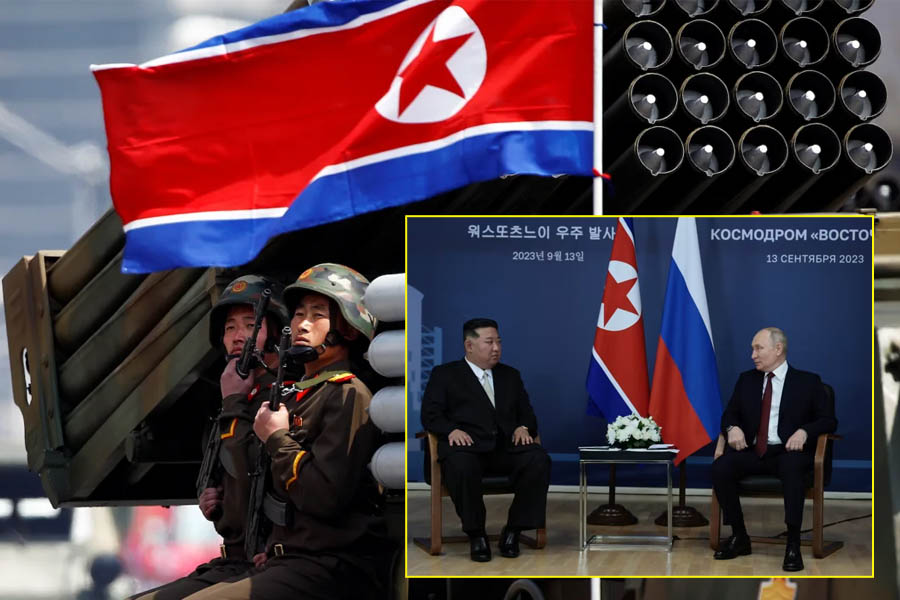
Russia's ongoing involvement in the Ukraine conflict has sparked a critical ammunition shortage. With Russia firing approximately 14 million shells annually in Ukraine while being capable of producing only 2 million, and Ukraine struggling to source its required ammunition, a recent agreement between North Korea and Russia to supply artillery rounds has emerged as a potential solution. However, this seemingly straightforward deal carries far-reaching implications for global stability.
Sanctions and the Quest for Ammunition
Following Russia's invasion of Ukraine, international sanctions have severely limited Moscow's access to military equipment, including artillery rounds. Russia has sought assistance from China and Iran in this regard. China, while expressing warmth towards Russia, has publicly refrained from directly supplying equipment to the Ukrainian battlefield. Iran has provided Russia with some drones and a limited quantity of shells.
North Korea has become the first nation to offer a substantial quantity of ammunition directly for Russian artillery, potentially marking a significant step towards a broader conflict when viewed within the broader geopolitical context.
Unusual Diplomatic Moves
The meeting between Russian President Vladimir Putin and North Korean leader Kim Jong Un on September 13 marked Kim's first international trip since the Covid-19 outbreak in 2020. Kim's heavily armored train emphasized the symbolic importance of this face-to-face meeting, signifying a level of trust between the two leaders.
The Russian Perspective
Russian military operations in Ukraine, along with well-fortified defensive positions, heavily rely on extensive artillery use. However, Russia has faced challenges in maintaining a consistent supply of shells, leading them to explore international markets. In contrast, the Korean peninsula, still under a ceasefire since the Korean War (1950-1953), has well-maintained shell stocks managed by North and South Korea.
This arrangement allows the U.S. to purchase South Korean shells for transfer to Ukraine while Russia prepares to receive North Korean shells. This helps both sides maintain their rates of fire while their domestic industries adapt to ongoing conflict demands.
Unlikely Alliances
Historically, Russia participated in international efforts to limit North Korea's development of nuclear technologies during the 1990s. Russia, like China, prioritizes stability in its neighboring regions and views a nuclear-armed North Korea capable of reaching the U.S. or Europe as a destabilizing factor. However, Russia's invasion of Ukraine and the urgent need for artillery ammunition have laid the groundwork for this pragmatic alliance.
North Korea's motives in this deal are clear: trading ammunition for cash, food aid, and advanced military technologies. The extent of Russia's transfers in these categories will determine the degree of its reliance on North Korean ammunition. However, it is unlikely that Russia will provide more than improved missiles for North Korea's nuclear program, stopping short of hypersonic missiles or miniaturized warheads. Russia's concerns about regional stability explain U.S. intelligence's efforts to publicize early talks and dissuade Russia from proceeding. The collaboration on spy satellites, mapping, live intelligence, and cyber warfare between Russia and North Korea holds significant potential to shape the politics and values of the Euroatlantic area. The connection between the ongoing Eastern European conflict and historical and current tensions in Asia poses a significant risk and provides a realistic path to a more extensive conflict. In conclusion, while the agreement to supply artillery shells may appear as a straightforward transaction, it carries the potential for more dangerous technology transfers and establishes a direct link between the Eastern European conflict and tensions in Asia. This development underscores the necessity for cautious international diplomacy to maintain global stability.